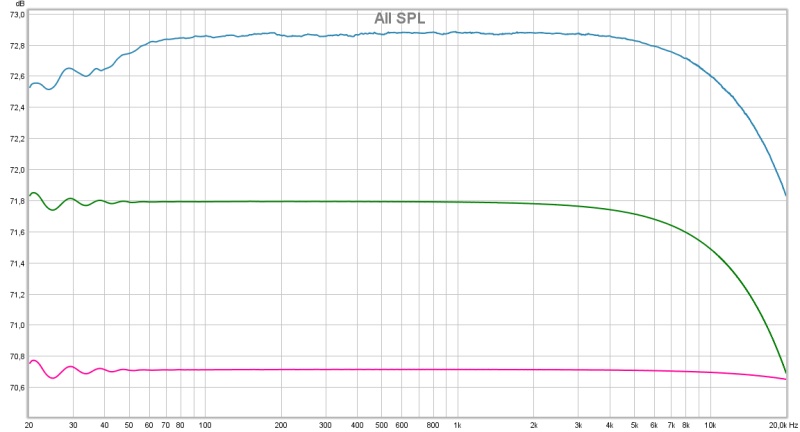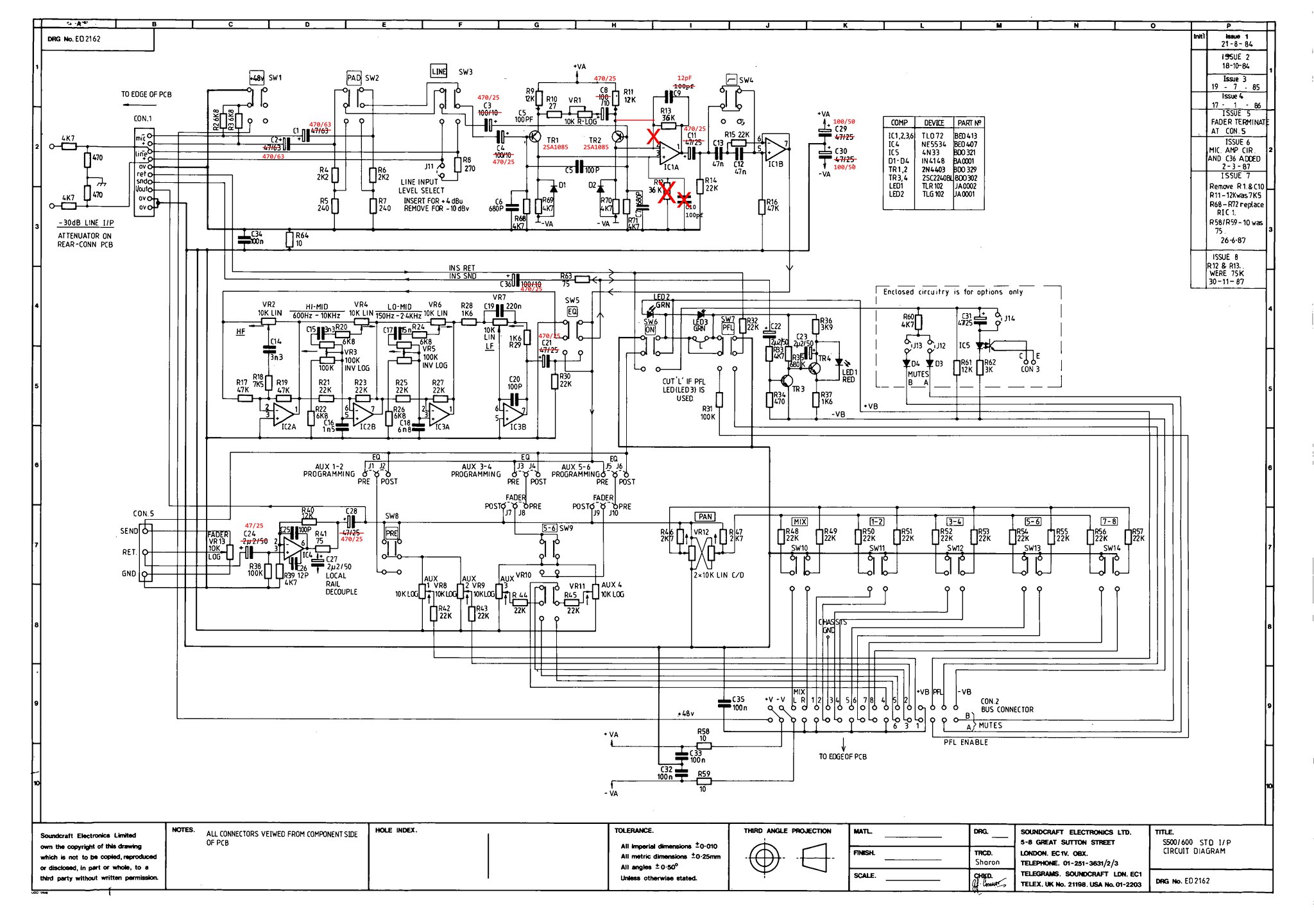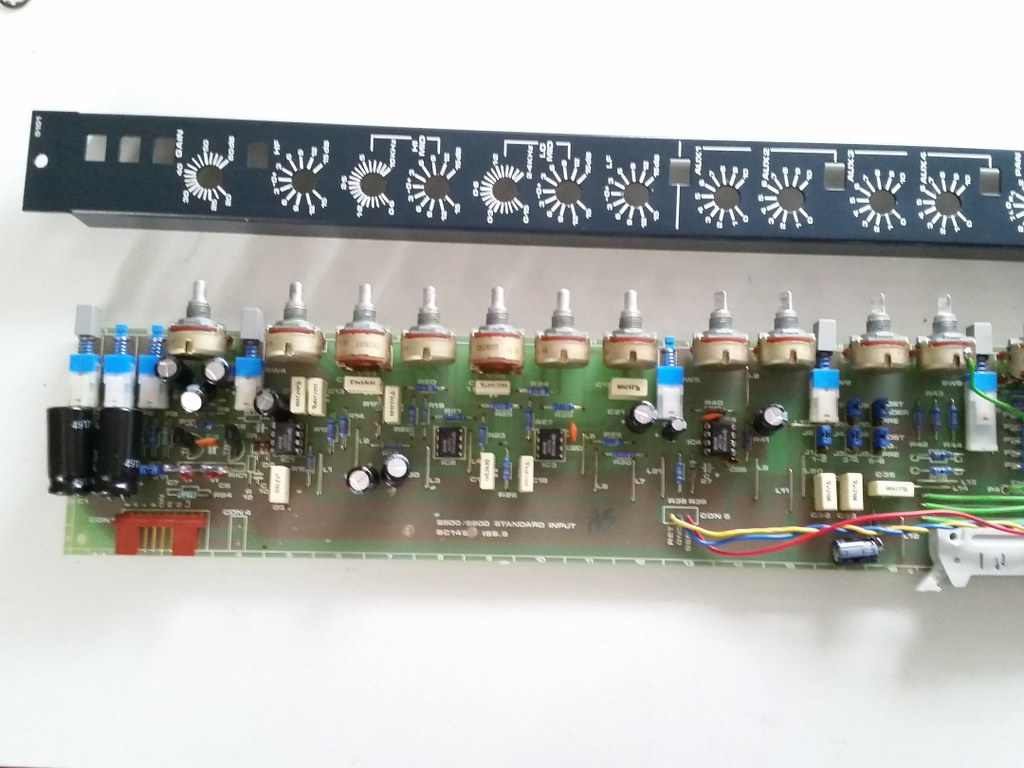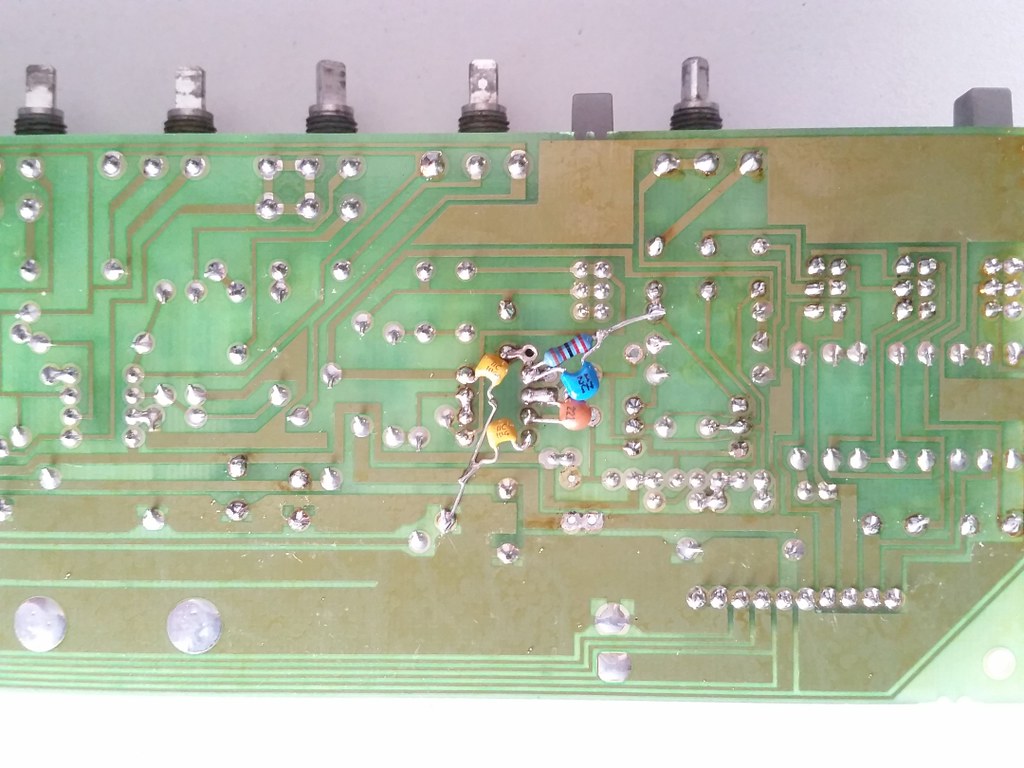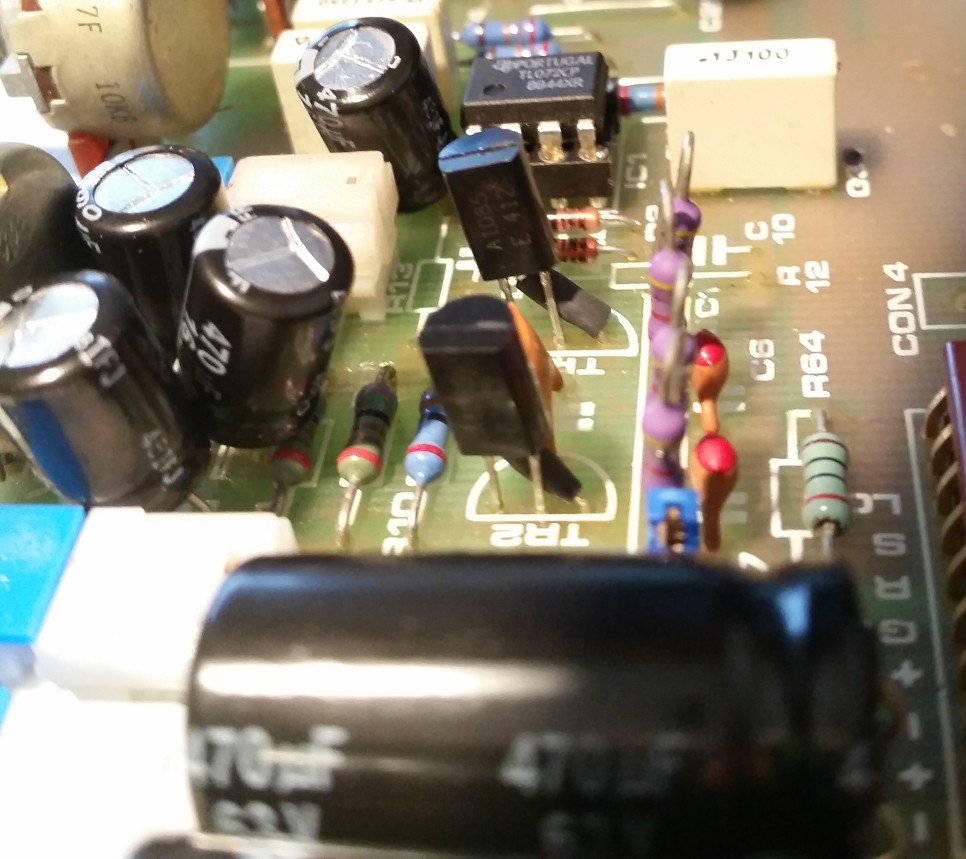Dear Diyer,
After more than one year spend to recapping / cleaning / fixing my soundcraft 600 i'm now spending time to measure to improve a little bit the board.
First thing here is the frequency response of a recap and a non recap channel. Bottom end are lot better but no difference at the top end:
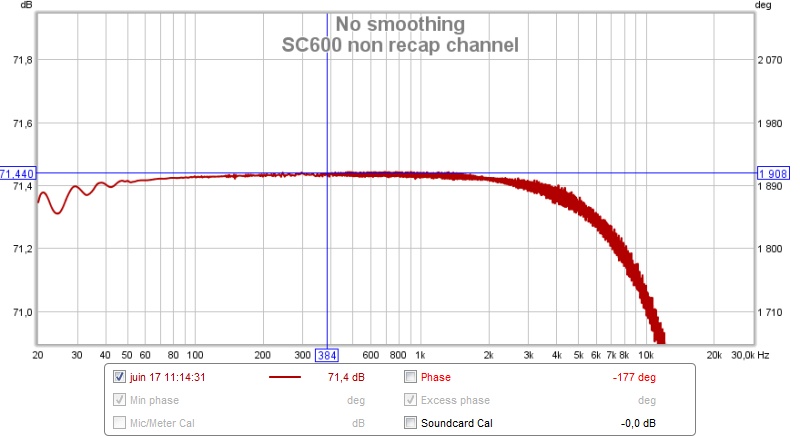
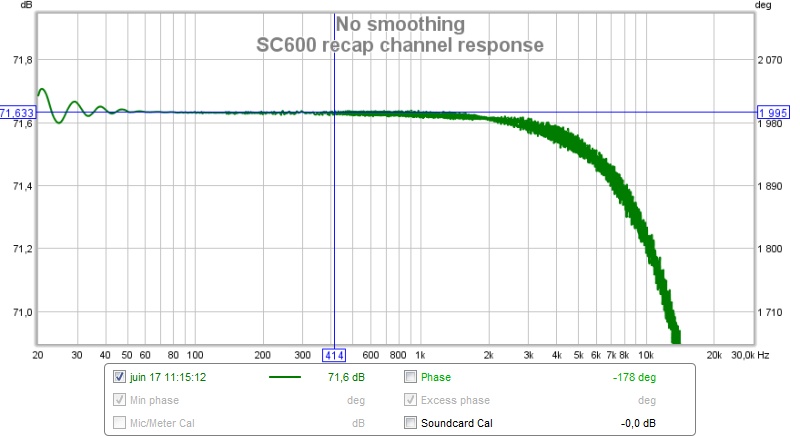
How can i improve top end response ?
So second thing is about THD. I first measure a huge total harmonic distortion and i was a little angry of it more than 0.5ù of THD is too much!!
more than 0.5ù of THD is too much!!
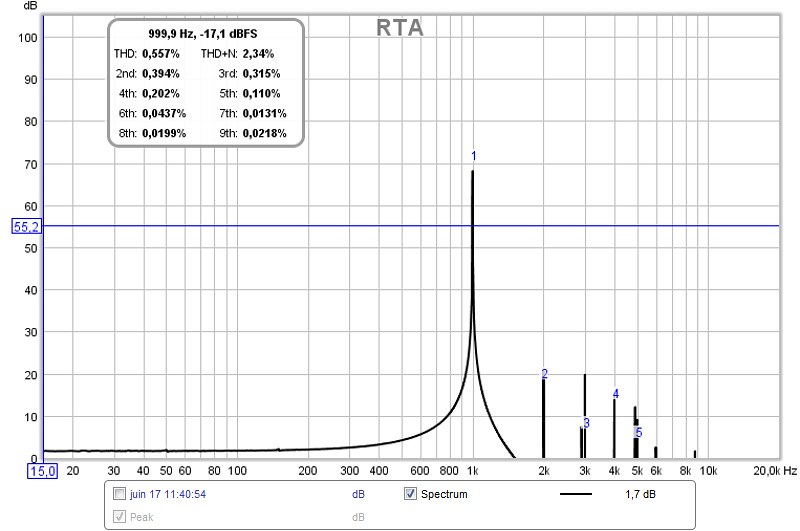
Then i start moving masters level like OSC level and what's a surprise THD get lower when OSC level is not to 0:
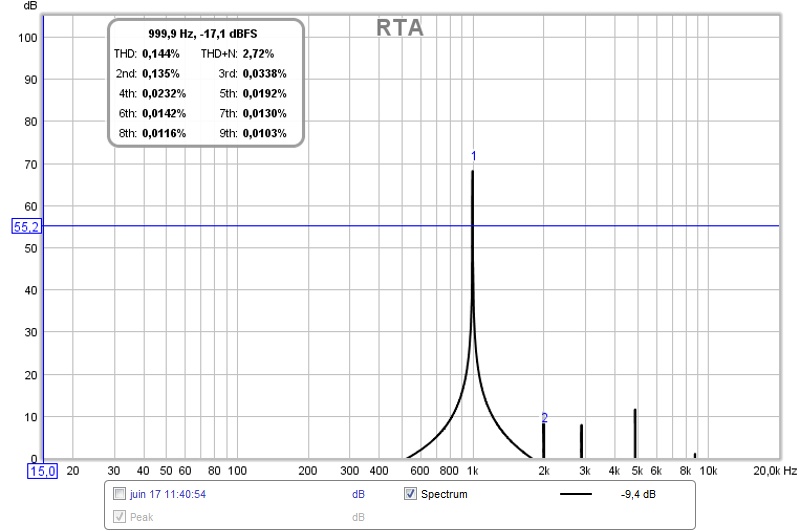
But 0.144% THD is not acceptable too so i unscrew the master channel to check solder on PCB and everything and at the moment when Master channel faceplate was isolated from the chassis ground THD became normal =>0.04%. Is not so bad
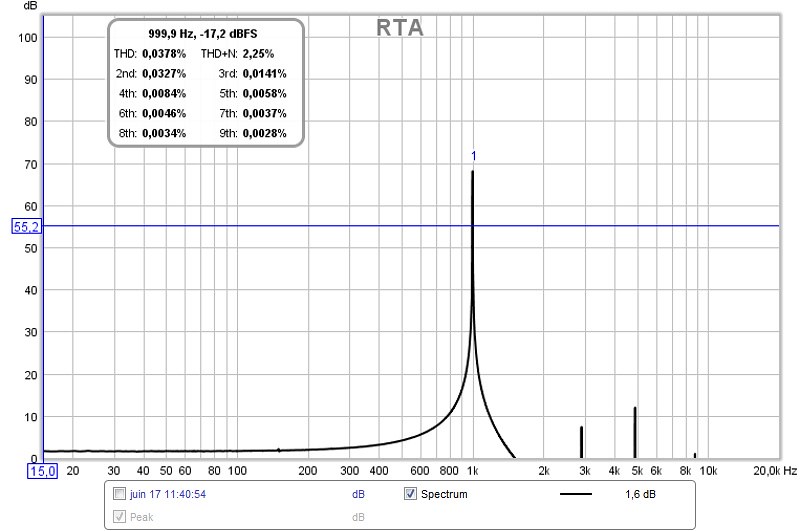
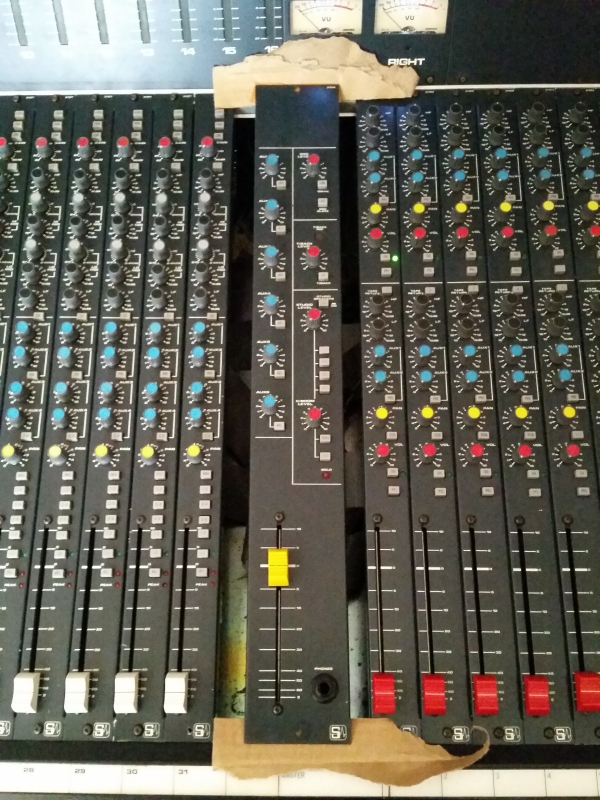
My question is how to solve this ground issue i can not keep my master channel on piece of paper like that !! And why moving OSC level change THD level ?!!
Thank you for your help
After more than one year spend to recapping / cleaning / fixing my soundcraft 600 i'm now spending time to measure to improve a little bit the board.
First thing here is the frequency response of a recap and a non recap channel. Bottom end are lot better but no difference at the top end:


How can i improve top end response ?
So second thing is about THD. I first measure a huge total harmonic distortion and i was a little angry of it

Then i start moving masters level like OSC level and what's a surprise THD get lower when OSC level is not to 0:

But 0.144% THD is not acceptable too so i unscrew the master channel to check solder on PCB and everything and at the moment when Master channel faceplate was isolated from the chassis ground THD became normal =>0.04%. Is not so bad


My question is how to solve this ground issue i can not keep my master channel on piece of paper like that !! And why moving OSC level change THD level ?!!
Thank you for your help














